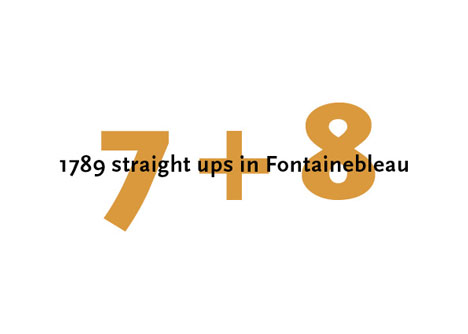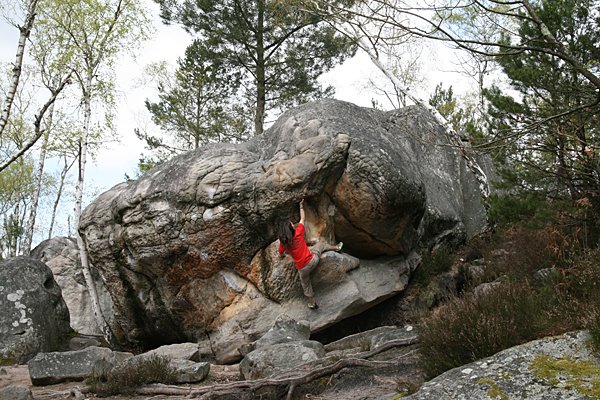Everyone knows the gravity is heavier in the forest.... I took a research trip to Fontainebleau to 'climb lighter' and collect my thoughts for the next bouldering book, before we launch into a few Scottish trad books from Stone Country Press.
The finest quality to bouldering in my opinion is its flexibility and this is well worth exploiting in an area as diverse and huge as Fontainebleau, you can search for varying styles of climbing, even changing them on the same boulder within seconds - should you find your crimping strength is weak but your core tension is good, drop the sharp marble-edged walls and climb into the depths of a slopey roof! Or vice versa... Font is a place of pure experimentation and allows you the luxury of trying your new formulae with no more than the fear that you're popping placebos, it's all in the mind anyway... just move on if nothing happens, that's the philosophy of the forest! Thousands and thousands of these little experiments provided a few choice 'cures' to Font gravity and a new problem or two.

The finest quality to bouldering in my opinion is its flexibility and this is well worth exploiting in an area as diverse and huge as Fontainebleau, you can search for varying styles of climbing, even changing them on the same boulder within seconds - should you find your crimping strength is weak but your core tension is good, drop the sharp marble-edged walls and climb into the depths of a slopey roof! Or vice versa... Font is a place of pure experimentation and allows you the luxury of trying your new formulae with no more than the fear that you're popping placebos, it's all in the mind anyway... just move on if nothing happens, that's the philosophy of the forest! Thousands and thousands of these little experiments provided a few choice 'cures' to Font gravity and a new problem or two.

'Bart'
The new guide '1789' Straight-Ups in Fontainebleau (a significant number in France!) is a work of genius, pulling together complexity into a clear and logical layout, with a simple and elegant design, allowing the climber the time just to climb! The maps are all cross-referenced and super-accurate, it's a lifetime's reflection of a love of the forest from Bart van Raaij - the book simply became known as 'Bart' on the trip, we passed 'Bart' from hand to hand, threw it on the ground a thousand times, drove over it, spilt espresso on it, sat on the bog with it with dirty hands, hit slobbery dogs with it, used it as a sun-shield, rain-hat, left it out in the dew... and it is still in one piece, so the production standards are pretty rugged. As I said, a work of genius, if you are operating at 7a or over. And did my own experimentation work? A little, I notched off one more point of gravity on my very slidey scale, proving that nothing comes easy in Font... I'd say a grade a year if you are lucky!!


EOS, Chateauveau, 7b
